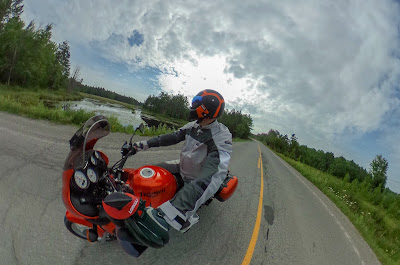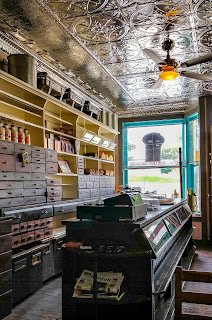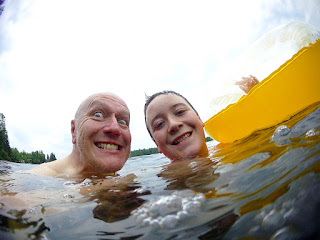| Fortunately, the ark didn’t have to worry about any of those pesky fictional icebergs… |
Over the past couple of days the concept of professionalism seems to keep popping up, usually after it’s been lit on fire. It began when someone posted a quote on Facebook based on a Twitter storm. It was described as ‘interesting’ on Facebook and lots of people on there were very happy to prop it up. I would have called it asinine. My first instinct was to write back, ‘it’s important to remember that amateurs built the starship Enterprise but professionals built the space shuttle.’ But I didn’t.
Beyond the amateurs-are-really-good-at-building-things-that-don’t-exist thinking, I was more put off by the implicit attack on professionalism. Ironically, it’s the lack of professionalism in our news that’s accelerating this anti-professional bias. When you share media created to force an opinion rather than declare facts, you’re pouring gas on the ignorance fire. From patients spending half an hour on Google and then telling their doctors what their self-diagnosis is and demanding they medicate them for it (self assured arrogance is a wonderful byproduct of everyone’s-an-expert), to shady business men taking over super powers (dido), the idea that we don’t need professionals any more because we all have access to information, and therefore know everything, is rampant.
The problem with our information deluge is that it isn’t vetted. With no oversight or fact checking, alternative facts become facts when they are repeated often enough. Opinions become truths when you find enough people to repeat them. Part of this comes down to the shear volume of information around us. We’re living in a tsunami of data, and we’re very bad at curating it.
| That quote is from 2010. The revolution happened, but it hasn’t been the touchy-feely future of knowledge that we thought it would be. Maybe AI can sort it out, because we’ve made a mess of it. |
The flood of social media data has us awash in information, much of it crap. With a waning (professional) fourth estate and everyone on the planet rapidly getting to the point where they can broadcast their opinions no matter how factually bereft, we are living in dangerous times. There was some hope, early on, that crowd sourcing would help manage this onslaught, but it turns out a large proportion of the crowd doing the sourcing are idiots.
Our willingness to absorb untruths are amplified by the idea that we customize our social media feeds based on our own beliefs. Doing so turns our ‘news’ intake into an echo chamber of ideas that only support our world view; a sort of self-fulfilling propaganda. This quickly takes on Orwellian proportions as people who once kept their racist thoughts to themselves suddenly find themselves at the virtual equivalent of a Clan meeting. Those embarrassing prejudices are suddenly worth broadcasting. This process is a powerful one, and its tail is wagging the political dog in 2017.
| Alternative is right – this ‘headline’ photo is taken from a 2007 HBO film. Welcome to 2017. |
It isn’t just the alt-right who are happy to take this neo-propaganda and make use of it. With no oversight, everyone with a strong opinion is happy to take pictures from a film and publish them as if they are news, just to convince people that what they think is right.
Way back in the naughties (’06 I think) one of my media studies students brought in a video that prompted tears and a lot of conversation. The inevitability of what they proposed in that video caused a lot of anxiety in our class, me included. At the time, social media barely existed so this seemed like a real stretch, but in the dystopian future they describe in the film the traditional news media has fallen apart, eaten by the internet. What’s left is a shallow, sensationalist mediascape that caters to the quality of thought most people aspire to. In the past year I’ve begun to think that this quality of thought isn’t anywhere near where I thought it was.
The description at the end might be starting to feel all too familiar:
“At its best, edited for the savviest readers, EPIC is a summary of the world, deeper and broader and more nuanced than anything available before. But at its worst, and for too many, EPIC is merely a collection of trivia, much of it untrue, all of it narrow, shallow and sensational, but EPIC is what we wanted…” It’s what we have today.
We’re too busy, distracted and incompetent to vet and even critically analyze the media that engulfs us, and we’re too cheap to hire people to do it for us. It turns out we weren’t just paying for information from the fourth estate, we were also paying for critical analysis. But if we can get sensationalism for free why pay for hard truths?
A philosophical underpinning to all of this is the idea that anyone can do or say anything they want simply by wanting to do it. Effort to develop mastery in a skill (ie: professionalism) is frowned upon. We’re told by wealthy people that doctors, politicians, teachers and other professionals are shysters who are trying to take advantage of us, and we buy it! We idolize the mega-rich who are so simply because of the situation of their birth rather than because of any professionally developed skill. The lies we tell ourselves every day are part of a vicious cycle made possible by an information revolution that made everything except learning the truth easier.
from Blogger http://ift.tt/2ktLRgE
via IFTTT








